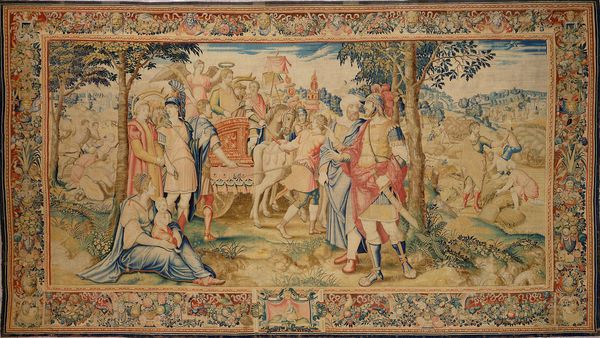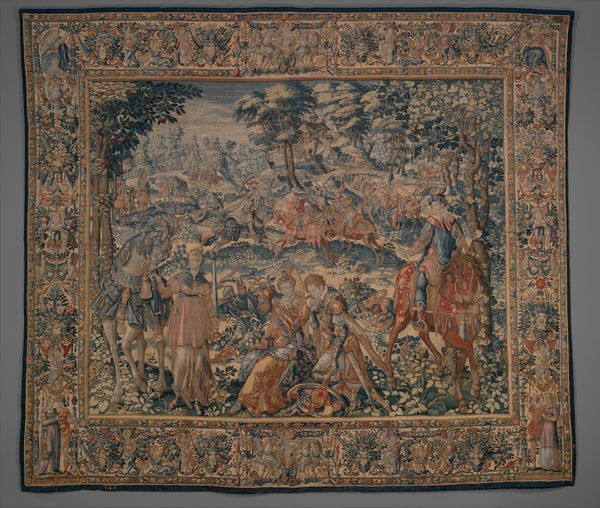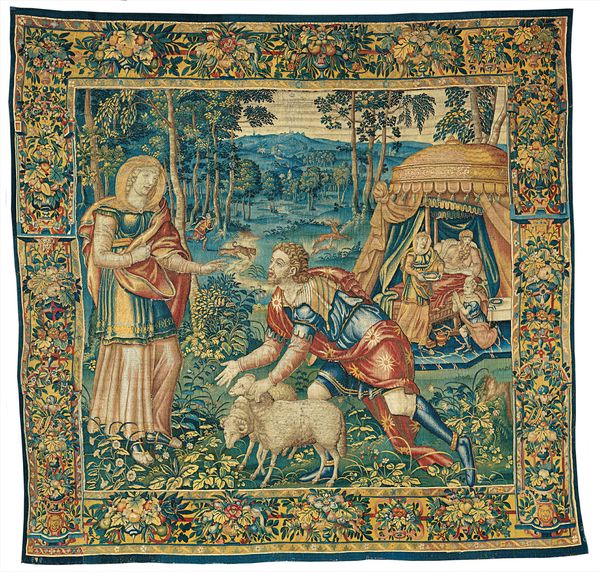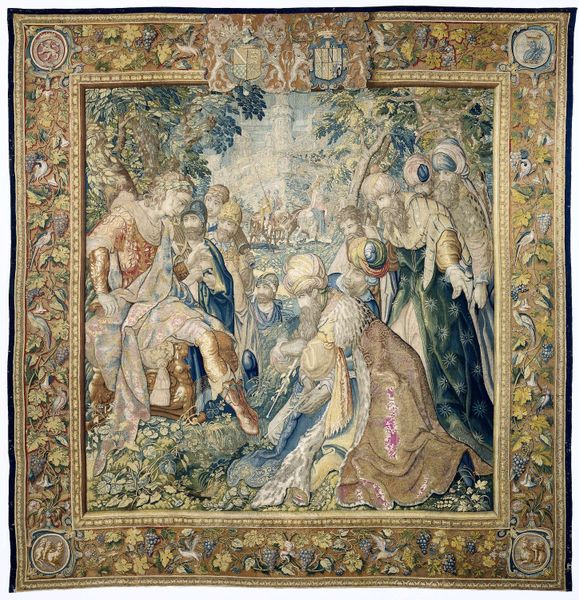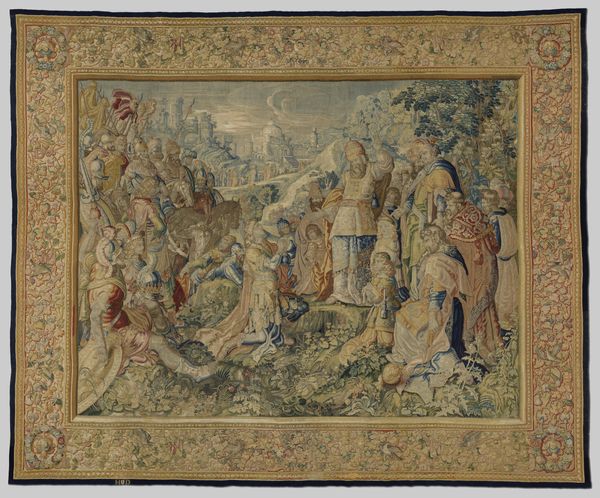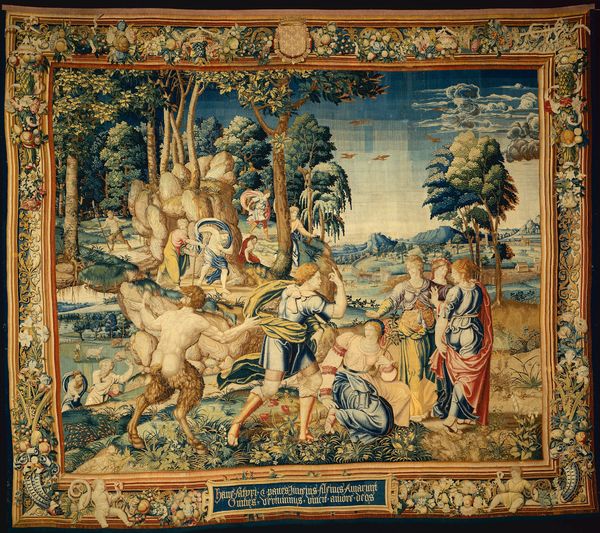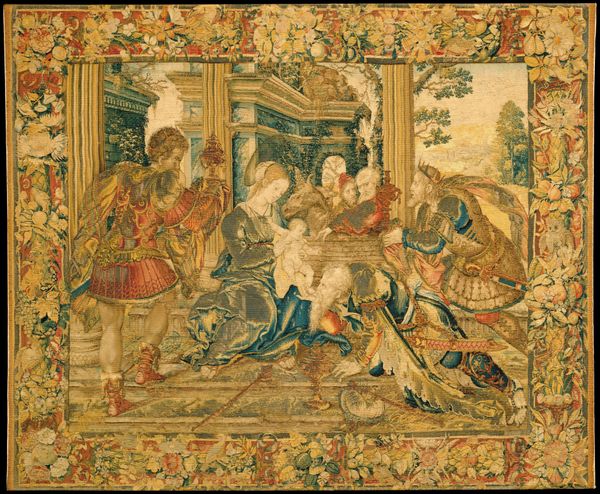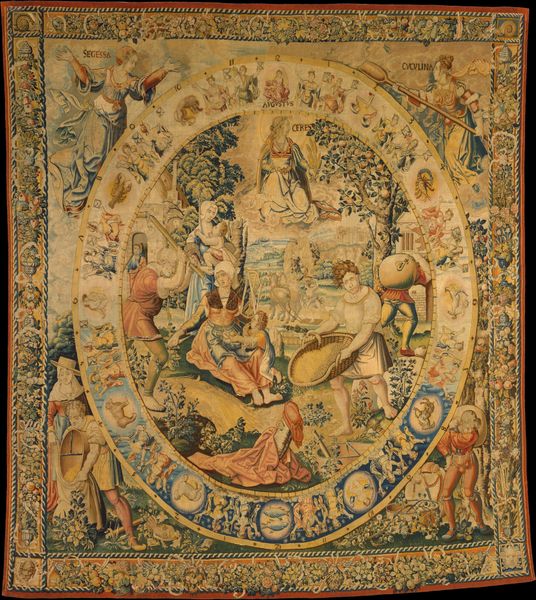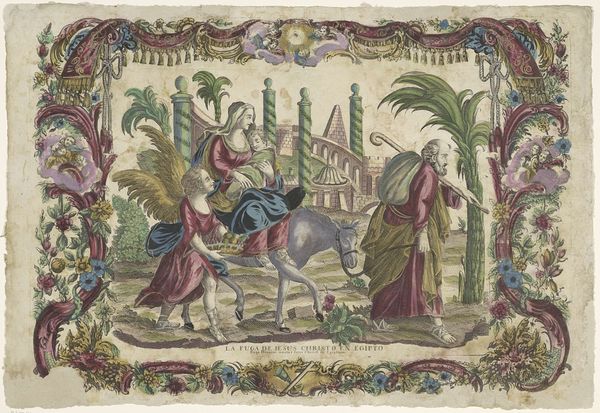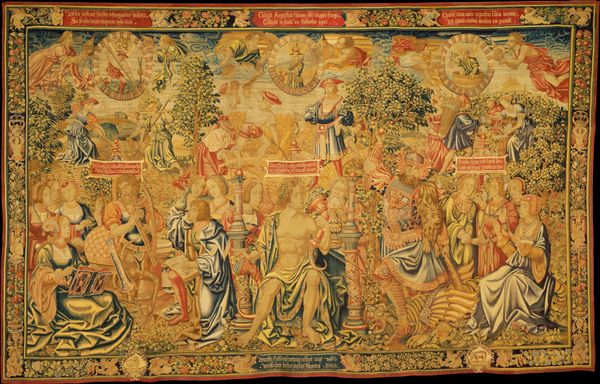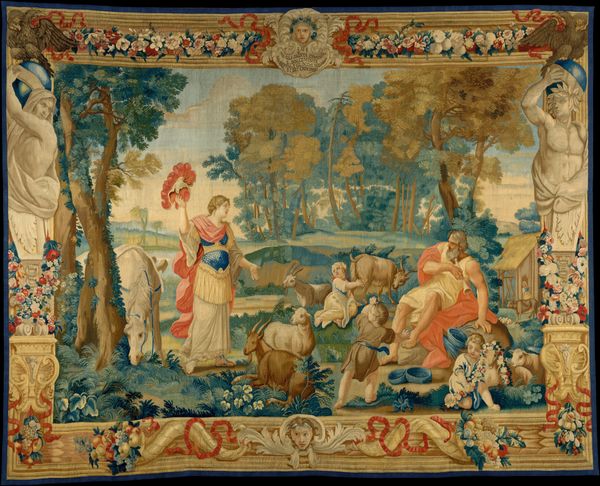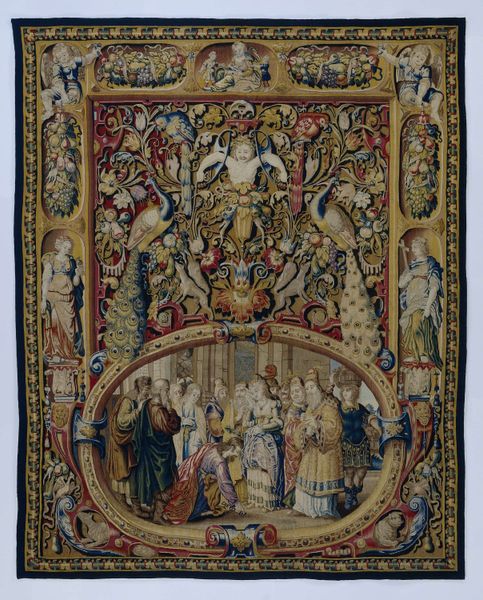
weaving, textile
#
narrative-art
#
weaving
#
landscape
#
textile
#
mannerism
#
figuration
#
history-painting
Dimensions: height 431 cm, width 560 cm
Copyright: Rijks Museum: Open Domain
Curator: Standing before us is a magnificent tapestry entitled "God Blesses Noah's Family," created after 1567, and attributed to Willem de Pannemaker. Editor: My immediate thought is, “abundance.” Look at this lush landscape and the overflowing sky, but with an underlying sense of solemnity, particularly with the posture of figures at prayer. Curator: The scene is rich with symbolism indeed. We see God, appearing with a full rainbow behind, blessing Noah and his family after they emerged from the ark, safe after the great flood. This textile's interpretation fits within the larger tradition of narrative art, displaying an event central to Christian theology. The figures’ mannerist elongated forms are typical of the period and give a dramatic flair to the composition. Editor: The rainbow, of course, is universally a symbol of hope, a bridge between earth and the divine, quite literally here. The positioning of Noah’s family in this composition also strikes me, grouped but also turned outward, toward us as viewers as much as toward the blessing itself. It speaks to the importance of community in receiving divine favor, with God depicted within and above this world and in it as well, bringing down this new dawn. Curator: Considering the work’s medium—textile weaving—the complexity of design and execution points to the function that these large tapestries fulfilled in society. Displayed in privileged settings and palaces, they provided an aristocratic expression of devotion, and reinforced faith with imagery and accessible narration for all social classes. This would not be an intimate devotional object but a demonstration of wealth and pious dedication at the same time. Editor: I wonder about that pious dedication though. God's blessing also echoes anxieties concerning nature and the divine will. The overflowing abundance you point out may reveal how profoundly communities experienced and interpreted the post-flood covenant; God might send destruction, yet simultaneously promises renewed prosperity for humankind. Curator: That tension is something to consider. A careful observation will lead us to consider its meaning, which makes encountering it that much richer. Editor: I’ll leave with a renewed appreciation of textiles as narrative devices and a subtle dance between symbolic hope and uncertainty in the tapestry’s vision of post-diluvian existence.
Comments
No comments
Be the first to comment and join the conversation on the ultimate creative platform.
